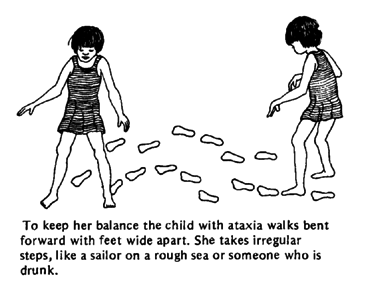
Ataxia Telangiectasia
Affects central nervous system, eyes, skin, and immunity
Ataxia telangiectasia is a genetic disorder that affects the central nervous system, the eyes, skin, and immune system. Ataxia telangiectasia affects both males and females and has been estimated to occur 1 in 40,000-50,000 individuals.
Symptoms:
1. Central Nervous System: loss of muscle control, leading to swaying of the head and trunk on standing; by age 10 children often need a wheelchair.
2.Skin: tiny red lesions, like spider veins, appear at the corners of the eyes and spread.
3. Immune System: impaired immune system leaves child open to recurrent respiratory infections.
Other symptoms may include delayed growth, difficulty speaking or swallowing, and dry coarse hair (which may be partly gray) and skin. About 20% of children with ataxia telangiectasia develop cancer such as leukemia or Hodgkin's lymphoma.
Diagnosis
Diagnosis is based on the symptoms the child has, especially the poor muscle control and the tiny red lesions on the eyes and face. The gene for ataxia telangiectasia has been identified, so genetic testing can be done to verify the diagnosis. Children are usually diagnosed sometime in early childhood (between ages 2-1/2 to 7 years old).
Treatment
There is at present no cure for ataxia telangiectasia, or way to slow down the progress of the disease. Treatment is aimed at relieving symptoms and trying to prevent respiratory infections, which are often the cause of death. Unfortunately, the outlook isn't very good; children with the disorder generally do not live beyond their teens or early 20s.
source: rarediseases.about.com
No comments:
Post a Comment